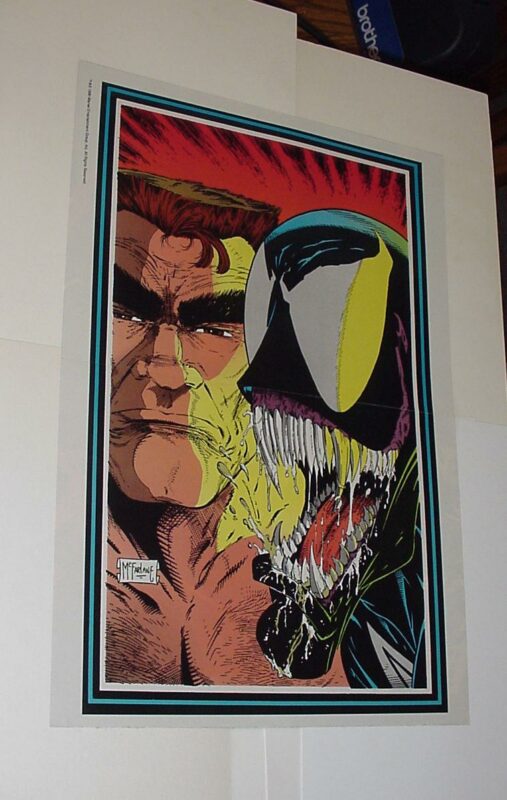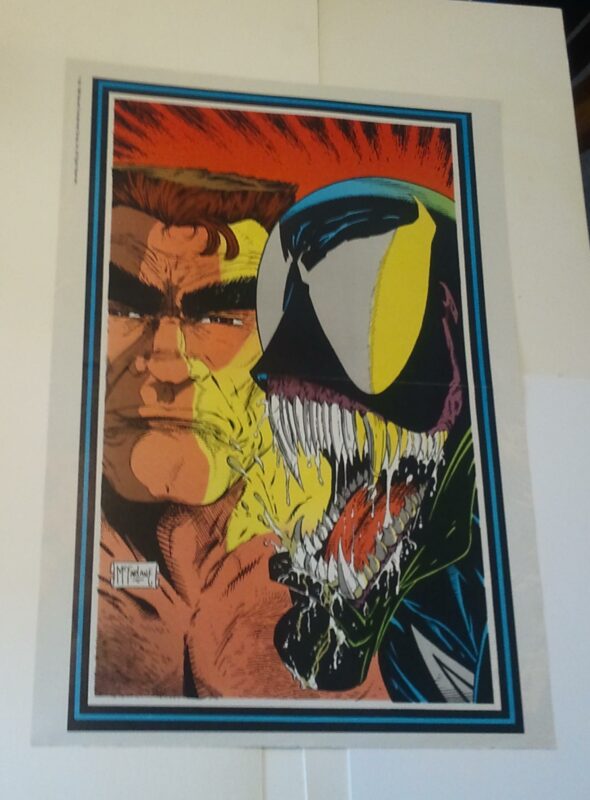Description
Brock is a journalist who exposes the identity of a serial killer only for the real killer to be caught by Spider-Man, Brock having accused the wrong man. Disgraced and suicidal, Brock comes into contact with an alien Symbiote, rejected by Peter Parker. The Symbiote bonds with Brock becoming Venom and together they seek out revenge against their mutual enemy. Writer David Michelinie and artist Todd McFarlane are generally credited with the character’s creation, based on a number of plot ideas and concepts from various other creators. The question of who created the character of Venom became an issue of contention in 1993 when Michelinie wrote to the comic book industry magazine Wizard, which had referred to Michelinie in issue #17 as “co-creator” of Venom. In his letter, printed in issue #21 (May 1993), Michelinie wrote that he was the character’s sole creator, while saying also he believed that without McFarlane the character would not have attained the popularity it did. First full cover appearance of Venom as depicted by co-creator Todd McFarlane. Writer Peter David corroborated Michelinie’s view in his “But I Digress” column in the June 4, 1993 Comics Buyer’s Guide, in which he stated that Michelinie discussed the ideas behind the character with him at the time of its creation. At that time, David was the writer on The Spectacular Spider-Man and wrote the “Sin Eater” storyline from which Eddie Brock’s backstory would be derived, well before McFarlane was assigned to the art duties on Amazing. Because artists who design the costumes or appearances of major characters and/or illustrate their first appearances are generally credited as co-creators, Venom represents a complex situation, because the costume from which Venom’s appearance is derived was not designed by McFarlane. Erik Larsen responded to Michelinie’s letter with one of his own that was printed in Wizard #23 (July 1993), in which he dismissed Michelinie’s contributions to the character, arguing that Michelinie merely “swiped” the preexisting symbiote and its powers to place it on a character whose motivations were poorly conceived, one-dimensional, unbelievable, and clichéd. Larsen also argued that it was McFarlane’s rendition of the character that made it commercial. Erik Larsen, who followed Todd McFarlane as artist on Amazing Spider-Man, added the long tongue and drool to Venom’s appearance. The preexisting elements that dealt with the symbiote costume itself – to which Michelinie did not contribute – have also been noted. For example, editor Jim Shooter came up with the idea of switching Spider-Man to a black-and-white costume, possibly influenced by the intended costume design for the new Spider-Woman, with artists Mike Zeck and Rick Leonardi, as well as others, designing the black-and-white costume (though a 2007 Comic Book Resources story contends that a fan suggested a black costume for the Spider-Man prior to this, for which he was paid by Shooter.9) Writer/artist John Byrne asserts on his website that the idea for a costume made of self-healing biological material was one he originated when he was the artist on Iron Fist to explain how that character’s costume was constantly being torn and then apparently repaired by the next issue, explaining that he ended up not using the idea on that title, but that Roger Stern later asked him if he could use the idea for Spider-Man’s alien costume. Stern in turn plotted the issue in which the costume first appeared but then left the title. It was writer Tom DeFalco and artist Ron Frenz who had established that the costume was a sentient alien being and also that it was vulnerable to high sonic energy during their run on The Amazing Spider-Man that preceded Michelinie’s. Regardless, Peter David’s position is that Michelinie is the sole creator, since the idea of creating a separate character using the alien symbiote was Michelinie’s, as was Eddie Brock’s backstory, and that without the idea to create such a character, the character would not have existed. In an interview with Tom DeFalco, McFarlane claims that Michelinie did indeed come up with the idea of Venom and the character’s basic design (“a big guy in the black costume”). However, he contends that it was he (McFarlane) who gave Venom his monster-like features. He claims; “I just wanted to make him kooky and creepy, and not just some guy in a black suit.” This dispute arose at a time when artists such as McFarlane and Larsen were enjoying a great deal of popularity and clout with readers, and capitalizing on their popularity by publishing creator-owned books with their new company, Image Comics, and it is possible that this issue was a subtext of the greater debate over the importance of writers versus artists that was being waged in the industry at the time. Prior to McFarlane’s departure from Marvel, the company stated that Venom was a creation of McFarlane’s, and Michelinie shared credit as co-creator. Regardless of the issues surrounding his creation, Venom was created under a work for hire contract, and Marvel owns all rights to the character.From 1990…over 20 years old!
This poster has begun to split along the fold. A piece of tape will remedy the situation but the item has been priced accordingly
Related products
-
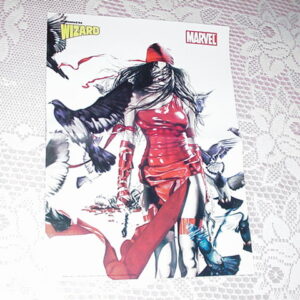
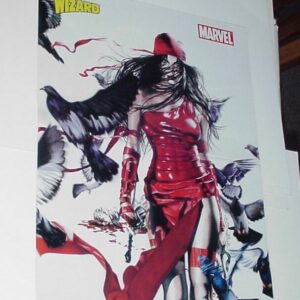
Elektra Poster # 2 by Rodolfo Migliari Daredevil Thunderbolts
$29.99 Add to cart -


Captain America Poster # 9 In Chains by John Cassaday Issue 8
$29.99 Add to cart -


Hellboy vs Wolverine Poster John Cassaday
$39.99 Add to cart -
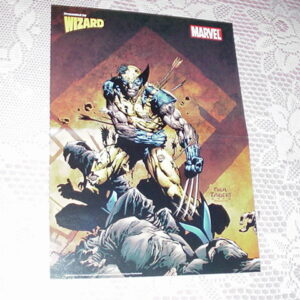
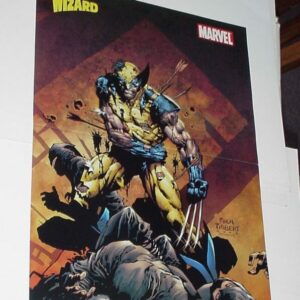
Wolverine Poster #16 vs The Hand The End by David Finch Ninjas
$39.99 Add to cart
